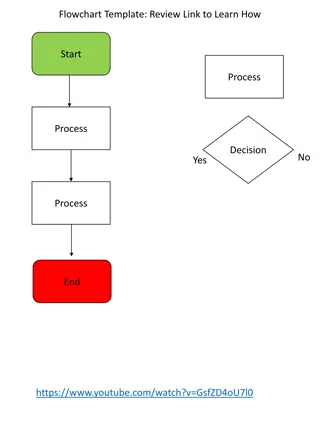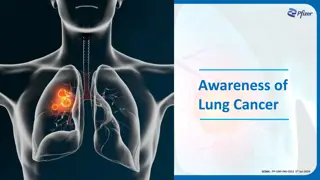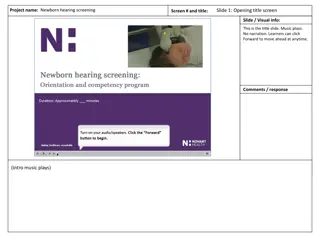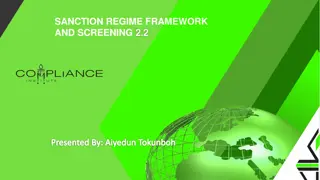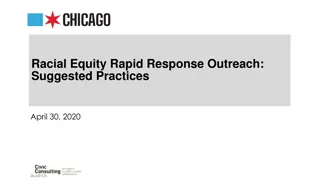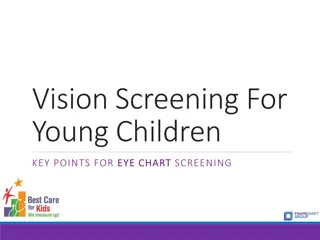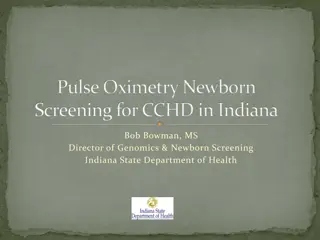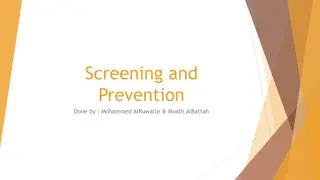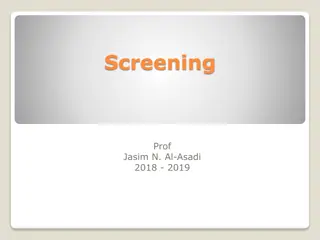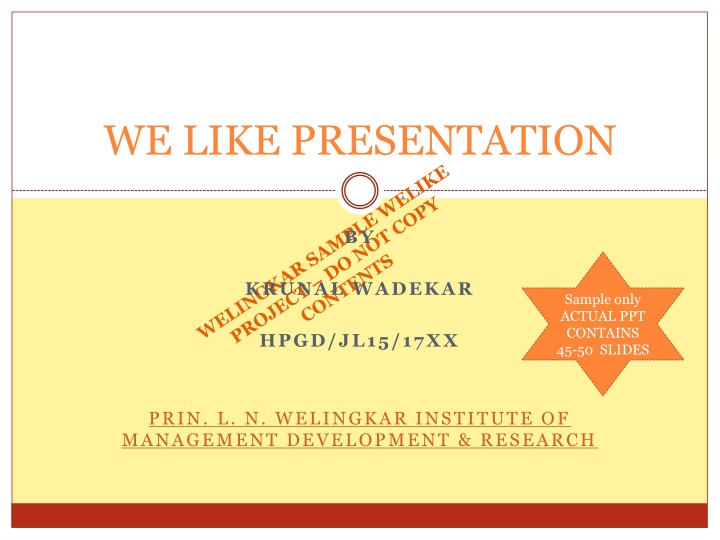
Screening Employees - The Need of the Hour
Pre-employment screening is crucial for ensuring personnel security by verifying credentials, employment history, and integrity of applicants. Learn about the importance of thorough screening processes in employment
Download Presentation

Please find below an Image/Link to download the presentation.
The content on the website is provided AS IS for your information and personal use only. It may not be sold, licensed, or shared on other websites without obtaining consent from the author. If you encounter any issues during the download, it is possible that the publisher has removed the file from their server.
You are allowed to download the files provided on this website for personal or commercial use, subject to the condition that they are used lawfully. All files are the property of their respective owners.
The content on the website is provided AS IS for your information and personal use only. It may not be sold, licensed, or shared on other websites without obtaining consent from the author.
E N D
Presentation Transcript
WE LIKE PRESENTATION BY KRUNAL WADEKAR Sample only ACTUAL PPT CONTAINS 45-50 SLIDES HPGD/JL15/17XX PRIN. L. N. WELINGKAR INSTITUTE OF MANAGEMENT DEVELOPMENT & RESEARCH
Screening Employees - The need of the hour - Prof. Priya Nair (1) Pre-employment screening is the foundation of good personnel security. It seeks to verify the credentials of those you are seeking to grant access to your sites and information, and to check that they meet preconditions of employment WELINGKAR SAMPLE WELIKE PROJECT DO NOT COPY CONTENTS
Screening Employees - The need of the hour - Prof. Priya Nair (2) Pre-employment screening can be used to confirm an applicant s identity, nationality and immigration status, and to verify their declared skills and employment history. It may also raise concerns about the integrity and reliability of an applicant, for example: WELINGKAR SAMPLE WELIKE PROJECT DO NOT COPY CONTENTS
Screening Employees - The need of the hour - Prof. Priya Nair (3) involvement in illegal activities; unspent criminal convictions relevant to the role, particularly if not volunteered by the applicant and only revealed by other checks; false or unsubstantiated claims on the CV or application form; unsubstantiated qualifications; unexplained gaps in employment history; adverse references; questionable documentation e.g. lack of supporting paperwork or concern that documents are not genuine; or evasiveness or unwillingness to provide information on the part of the candidate. WELINGKAR SAMPLE WELIKE PROJECT DO NOT COPY CONTENTS
Competency Frameworks Prof. Mansi Bhardwaj (1) The question is: How do you define the skills, behaviors, and attitudes that workers need to perform their roles effectively? How do you know they're qualified for the job? In other words, how do you know what to measure? Some people think formal education is a reliable measure. Others believe more in on-the-job training, and years of experience. Still others might argue that personal characteristics hold the key to effective work behavior. WELINGKAR SAMPLE WELIKE PROJECT DO NOT COPY CONTENTS
Competency Frameworks Prof. Mansi Bhardwaj (2) All of these are important, but none seems sufficient to describe an ideal set of behaviors and traits needed for any particular role. Nor do they guarantee that individuals will perform to the standards and levels required by the organization. A more complete way of approaching this is to link individual performance to the goals of the business. WELINGKAR SAMPLE WELIKE PROJECT DO NOT COPY CONTENTS
Mr. Paresh Chaudhry CEO, Madison PR (1) Paresh has over 24 years of Brand Communication & Reputation Management experience across Industries & key global markets. He has been a business communication professional with Reliance Industries, Hindustan Unilever, Smith Kline Beecham , Ranbaxy & Wockhardt. Paresh's last assignment was as Group President -Corporate Communications, Reliance Industries, reporting to Mr. Mukesh Ambani. Prior to Reliance, he was Head of Communications at HUL & Communications Leader, Unilever South Asia. WELINGKAR SAMPLE WELIKE PROJECT DO NOT COPY CONTENTS
Mr. Paresh Chaudhry CEO, Madison PR (2) A combined expertise of 25 years in marketing, brand management & communications and reputation management spanning across multiple industries with blue chipped companies ( Ranbaxy, HUL,RIL). A complete hands-on experience across key global markets has helped set benchmarks in brand management in the global corporate communication functions. An understanding of the above has given me an edge in the overall strategic planning and execution and my involvement in launching international brands ,creating brand identity manuals, media policies and customized crisis communication guidelines. These have proved a ready reference for each organization I have been associated with. WELINGKAR SAMPLE WELIKE PROJECT DO NOT COPY CONTENTS
Mr. Paresh Chaudhry CEO, Madison PR (3) From building the Corporate Brand of Ranbaxy in N America, Europe & India, to aligning regional communication country teams to bring alive the transition to one Unilever brand" and driving the Corporate name change from "HLL" to "HUL", to putting together systems & processes for effective global (internal & external) communications at RIL, Paresh has experience and expertise in all areas of Corporate Communications. WELINGKAR SAMPLE WELIKE PROJECT DO NOT COPY CONTENTS
CAPITAL AND CAPITALIZATION The term Capitalization is used only in relation to companies and not in respect of firms or sole-proprietorships. It is distinct from share capital which refer only to the paid- up value of shares issued and definitely excludes bonds and other forms of borrowings. Similarly, it should be distinguished form capital . The term capital refers to the total investment of a company in money, tangible assets like goodwill. It is in a way the total wealth of a company. When used in the sense of net capital, it indicates the excess of total assets over liabilities. Here, then, it includes the gains or profits from the use and investment of the capital that has not been distributed to the stockholders and excludes losses that have resulted from the use of capital. WELINGKAR SAMPLE WELIKE PROJECT DO NOT COPY CONTENTS
CAPITAL AND CAPITALIZATION Capitalization, on the other hand, refers only to the par value (i.e., face value indicated on the security itself) of the long-term securities (shares and debentures) plus by any reserves which are meant to be used for meting long-term and permanent needs of a company. Thus capital includes all the loans and reserves of the concern but Capitalization includes only longterm loans and retained profits besides the capital. WELINGKAR SAMPLE WELIKE PROJECT DO NOT COPY CONTENTS
UNDER-CAPITALIZATION Remedies of under-capitalisation If it is desired to remedy under-capitalization, it can be done relatively more easily than in the case of over-capitalization. The possible corrections for under-capitalisation may be outlined as under: (i) Spliting-up of shares: The effect of this measure will be more apparent than real because the overall rate of earnings in this case will remain the same though the dividend per share will now b e a smaller amount. WELINGKAR SAMPLE WELIKE PROJECT DO NOT COPY CONTENTS
UNDER-CAPITALIZATION (ii) Increase in par value of shares. The values of assets, under this scheme, may be revised upwards and the existing shareholders may be given new shares carrying higher par (face) value. In this way, the rate of earnings will decline though the amount of dividend per share may not be affected. As a further step, the com pay may offer the shareholders a share split-up and an increase in par-value. (iii) Issue of bonus shares. The most widely used and effective remedy for under capitalisation is the conversion of reserves into shares. This will affect both dividend per share and the over-all rate of earnings. WELINGKAR SAMPLE WELIKE PROJECT DO NOT COPY CONTENTS
WELINGKAR SAMPLE WELIKE PROJECT DO NOT COPY CONTENTS THANK YOU

